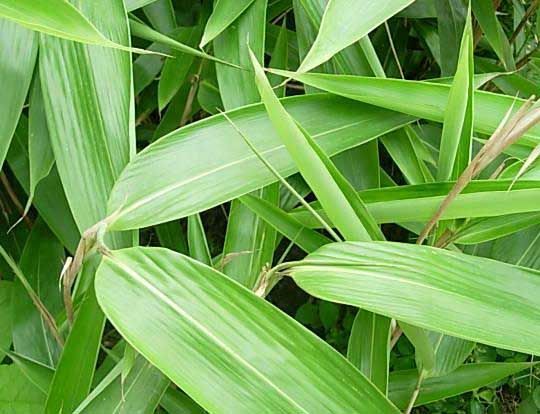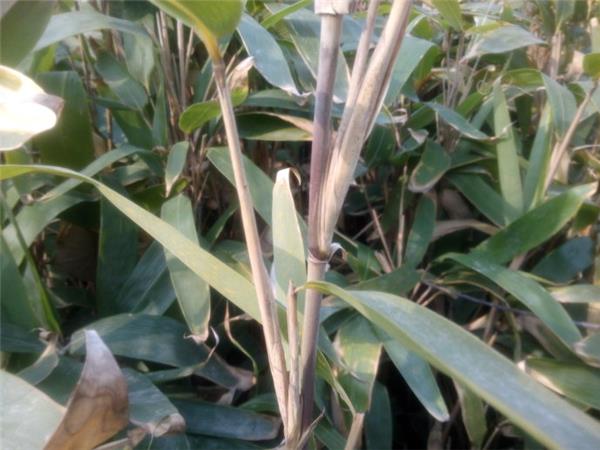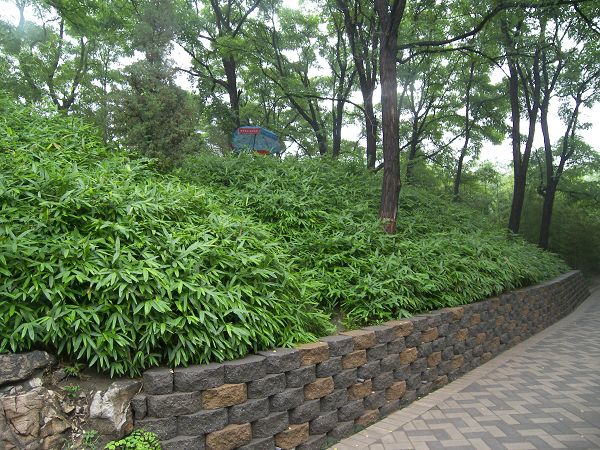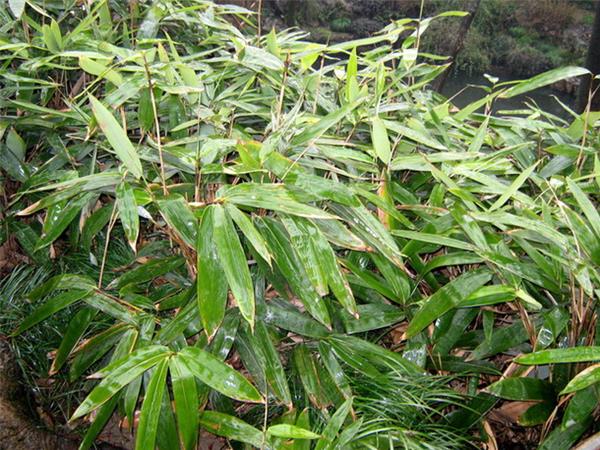Introduction to the propagation mode and maintenance points of Ruo bamboo
Ruo bamboo is relatively easy to survive, because it itself has a relatively strong vitality, although this is a very short bamboo, but like most bamboo easy to survive, Ruo bamboo is of course the same.

I. the propagation mode of Ruo bamboo.
Split-plant propagation: in spring and autumn, mother bamboo was dug into clusters for ramet, pruning the lower branches and leaves, not injuring whip buds and whip roots, transplanting more soil in the basin, pressing, watering and moisturizing. After the occurrence of new bamboo shoots, we should pay attention to protect them from damage; put them in a wet place and wait for the new buds to germinate before they can be moved to low light to receive scattered light. The depth of planting is generally 20 to 25 centimeters. If the bamboo shoots are too deep, it is difficult to break the soil. If the bamboo shoots are too shallow, they are thin and weak. According to the bamboo whip length (usually 40 to 50 centimeters), dig a growing hole, bury it into the bamboo whip, cover the soil firmly, and pour enough water.
Breeding with mother bamboo: select 1-2-year-old mother bamboo with fresh yellow bamboo whip and full buds, and then cut off the bamboo whip at the distance of 30 ~ 80 cm from the mother bamboo. The remaining whip is 15 to 25 centimeter, and the whip is 20 to 30 centimeter. Cut off its upper part with a sharp knife, generally retain 3-5 Ruo leaves, and then plant them in a pre-dug hole. The depth of the soil is 3 ~ 5 meters deeper than the original part of the mother bamboo. Watering, covering grass and opening drains in time after planting.

From 1.5 to June, combined with cutting the mountain and loosening the soil, the fertilizer was sprinkled on the split woodland, and then the soil was loosened to cover. At this time, the purpose of fertilization is mainly to provide conditions for the growth of bamboo whips, so it is necessary to give priority to quick-acting fertilizer, with urea of 100kg to 150kg per mu. Where there are conditions, organic fertilizer can be applied in autumn and winter, which can not only improve the soil fertility of woodland, but also maintain the soil temperature, which is beneficial to the new bamboo bud eye overwintering.
two。 At present, there are few pure forests in Ruo bamboo forest, and some Ruo bamboo forests have low utilization value and need to be reformed. Through the construction and propagation of high-quality Ruo bamboo forest, it can not only facilitate the picking of forest farmers, but also improve the income of Ruo bamboo forest. The main afforestation methods are propagation with mother bamboo and whip propagation. The afforestation land is Chinese fir forest, Chinese fir cutting site and woodland around Ruo bamboo area, digging holes or opening ditches for afforestation, and the row spacing is 0.5M*1M.
3. In order to cut the mountain and loosen the soil, we should master "the shallow near the clump and the depth of the far cluster", that is, the place near the bamboo tree and the clump should be shallow, generally cutting the mountain and loosening the soil 610 meters; the place far away from the bamboo tree (clump) is a little deeper, generally cutting the mountain and loosening the soil 15 to 20 meters. Cut the mountain and loosen the soil every 3-4 years, be careful not to damage the young and strong bamboo whips, roots and buds, and dig up the stones, trees and old bamboo whips in the soil.

3. The species of Phyllostachys pubescens included in the genus Ruo bamboo
Morphological features: the rod is about 1.5 meters high and 4 mm in diameter, hard and bright; the internodes are cylindrical, hollow but nearly solid because of the wall thickness, and the upper internodes are often unequal in length; the branches are sturdy, and the scabbard is pushed away from the main rod by it and tightly wraps the branches. The sheath is persistent, 6-10 cm long, longer than its internodes, lilac, glabrous or sometimes upper with small spines, margin ciliate; sheath mouth seamless. Leaves with leafy branchlets terminal 2 (3) leaves; leaf sheath 7-10 mm long, glabrous; ligule only 0.5-2 mm high, truncate; leaf blade oblong and lanceolate, 10-20 mm long, 1.5 Muth3 mm wide, apex acuminate, lower surface basally with a few sparse short hairs or glabrous on both surfaces, base contracted into a petiole ca. 5 mm long, secondary veins 6-8 pairs, small transverse veins clearly visible. The fruit is not seen, and the flowering period is from April to May.
Growth habits: born under the forest or by the side of the road at an altitude of 1000 meters.

The bamboo poles of Ruo bamboo are short and lovely, the bamboo leaves are full of luster, and they have high ornamental value. Group afforestation and planting in the courtyard are very good choices, which can effectively add natural and fresh atmosphere to the surrounding environment.
Related
- Wuhan Hospital Iron Tree Blooming Result Was Instantly Frightened by the Gardener Master
- Which variety of camellia is the most fragrant and best? Which one do you like best?
- What is the small blue coat, the breeding methods and matters needing attention of the succulent plant
- Dormancy time and maintenance management of succulent plants during dormancy
- Minas succulent how to raise, Minas succulent plant pictures
- What are the varieties of winter succulent plants
- How to raise succulent plants in twelve rolls? let's take a look at some experience of breeding twelve rolls.
- Attention should be paid to water control for succulent plants during dormant period (winter and summer)
- Watering experience of twelve rolls of succulent plants
- Techniques for fertilizing succulent plants. An article will let you know how to fertilize succulent plants.



